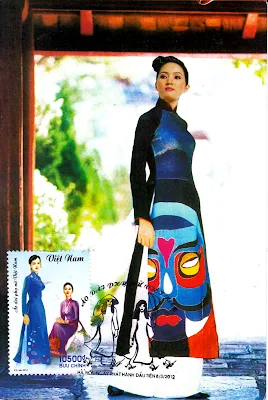Ao dai has long been a traditional costume and a cultural feature of the Vietnamese people. Through each period of historical development, ao dai has constantly changed but still ensures to honor the traditional gentle beauty of Vietnamese women.
Giao Linh Ao
The appearance of the Ao Dai originated from the Giao Linh Ao (1744) - the earliest style of the Vietnamese Ao Dai. The Giao Linh Ao Dai is also known as the Doi Linh Ao Dai, is sewn loosely, with slits on both sides, wide sleeves, and a long body reaching the heel. The body of the Ao Dai is sewn from 4 pieces of fabric combined with a colored belt and a black skirt. This is a cross-necked Ao Dai style similar to the Tu Than Ao Dai.
Le Pho Ao Dai
This is also a new combination of the four-panel dress, a variation of the Lemur ao dai by artist Le Pho, so it is called the Le Pho ao dai.
She shortened the size of the ao dai to fit the Vietnamese woman's body, pushed up the shoulders, lengthened the skirt to touch the ground, and introduced many new colors.
Raglan Ao Dai
Raglan ao dai, also known as ao dai with a jac lang pattern, appeared in 1960 by Dung tailor shop in Dakao, Saigon.
The biggest difference of the Raglan Ao Dai is that the dress hugs the body more closely, the way the sleeves are connected from the neck down at a 45 degree angle helps the wearer to be more comfortable and flexible. The two panels are connected by a row of buttons on the side. This is the type of Ao Dai that contributed to shaping the style of the Vietnamese Ao Dai later on.
Source: Vietnam Women's Union




No comments:
Post a Comment